Let Kirk Norbury be your tour guide to the best photographic locations this popular Scottish destination had to offer. Our guide to the Isle of Skye…
All landscape photographers have their dream locations, the places around the world they have to photograph before they die. If you are visiting Scotland then the Isle of Skye should definitely be on your list. It is truly breathtaking! It may be a long drive away but the journey will feel well worth it when you first glimpse the Cuillin Hills dominating the landscape.
The Isle of Skye has a large number of popular locations that have been photographed for years, but don’t let that put you off as there are always new ways to photograph a landscape. In this article I go through some of my favourite locations around Skye, and what you should look out for.
1. Sligachan
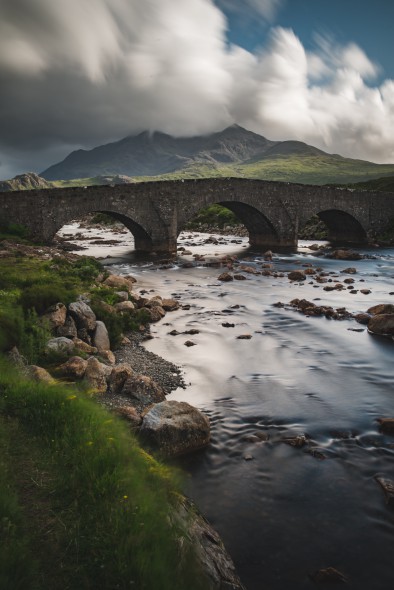
Sligachan, based on the main road between Broadford and Portree, is known for its stunning rivers and striking views of the Cuillin Hills. You’ll know you’re in the right place when you see the old stone bridge that runs parallel to the main road. There are lots of places to park, so that shouldn’t be an issue.
I start at the bridge and work my way up one of the rivers, of there are three to choose from – the Sligachan River, Allt Dearg Mor River and also the Allt Daraich River. All offer splendid views of the mountains, but my personal favourite is the Sligachan River as it heads straight towards the mountain range. It’s a perfect place to make use of an ND filter to add a bit of silkiness to the water.
2. The Quiraing
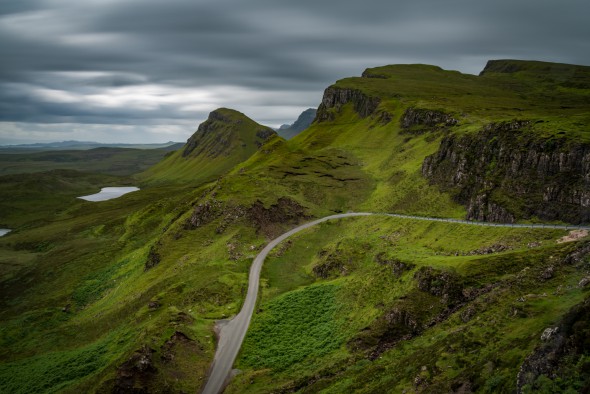
The Quiraing is a part of the Trotternish ridge and is located on the northeastern end of the Isle, not too far from Staffin. To get to this location to photograph this beautiful ridge, you’ll need to take the small road from Staffin that cuts across the Isle heading towards Uig. Again there’s not a great amount of parking, so try to pick your arrival time – early morning and evening will be quietest and deliver the best light.
When you come off the road, take a quick walk up the path and you will have great views of the Quiraing looking north and south. Both views offer great images but I recommend walking on the north path towards the Prison and The Needle, which are among a large cluster of rocks sticking out of the ground by the high cliff walls.
3. Old Man of Storr
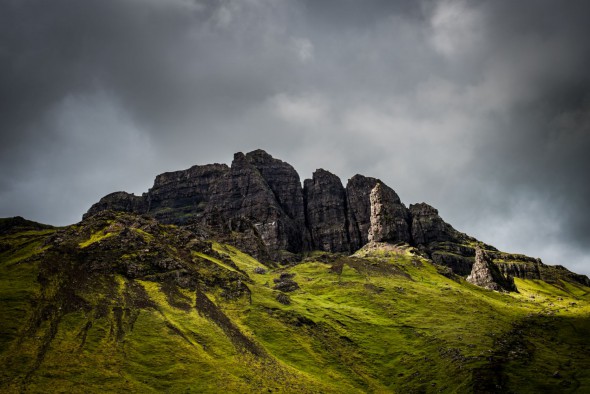
The Old Man of Storr is one of the most iconic locations of the Isle. Just like the Quiraing it’s part of the Trotternish ridge, and given that it’s only ten minutes north of Portree you can see why it can be one of the busiest locations during the summer months. With its abundance of unusual and epic rock formations, it is most definitely worth the walk..Getting to the Old Man of Storr takes about an hour, depending on your level of fitness, so pick your day wisely. If you’re going to be up there for around three hours you want good weather!
4. Neist Point Lighthouse
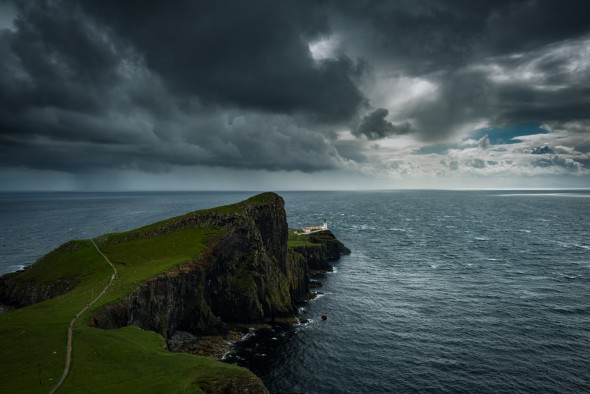
Neist Point hosts one of Scotland’s most famous lighthouses; you’ve most likely already seen it on a postcard somewhere. Neist Point is on the westernmost tip of the Isle, and to get there you first need to head towards Dunvegan. From Dunvegan you want to keep heading west to Glendale, and stick on this road until the very end where you will find the small car park.
It’s a good walk getting down to the lighthouse, with plenty of photo opportunities in all directions. Amazing cliff edges and rock formations are just a small part of what this headland has to offer; you can also see lots of different wildlife like whales, dolphins, basking sharks and many different seabirds.
There are lots of great shots to be had when walking down to the lighthouse and its surrounding area, but if you’re after the ‘classic’ shot of the lighthouse you’ll need to head north from the car park, where you will find a great view looking down from the cliff top. It can get very windy up there so watch your shutter speed when using ND filters – during my visit the slowest shutter speed I could get was 4 seconds before the shots started to blur.
5. Kilt Rock and Mealt Waterfall
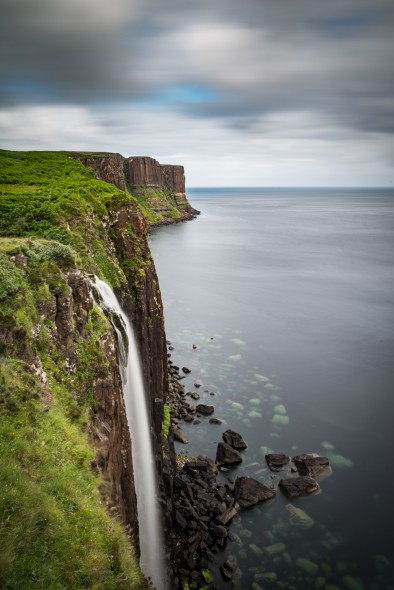
Not too far from Staffin, in the north of Skye, you will find on the coastline a beautiful spot called Kilt Rock. Kilt Rock is an area of stunning 200-foot-high sea cliffs made of tall columns of dolerite.
Before you take in the beautiful cliffs, however, you will first notice the Mealt waterfall that falls not too far from the car park and goes straight into the sea 60 meters below.
This spot can get very busy with people trying to photograph the waterfall, so getting a tripod in there for a long exposure can be difficult. If you’re intending to use an ND filter and a tripod then you may have to wait a bit for it to quiet down, or get there early in the morning when the rising sun will light up the waterfall.
6. Elgol
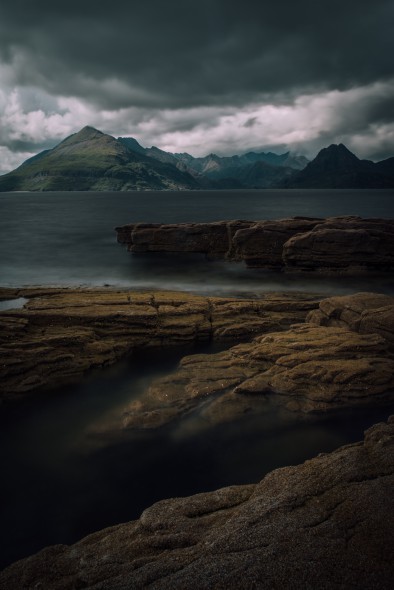
Elgol is a small fishing village on the shores of Loch Scavaig, located on the south of the Isle, and is known for its boat trips and breathtaking views towards the Cuillin Hills. There’s lots to explore around Elgol, and walking around the coastline will present you with stunning images looking towards the distant mountains or of the nearby Isles of Soay, Rum and Eigg. For some of the best views I recommend walking along the shoreline heading north, as there are some great rock formations and having the Cuillins in the background makes for stellar images.
7. Loch Coruisk
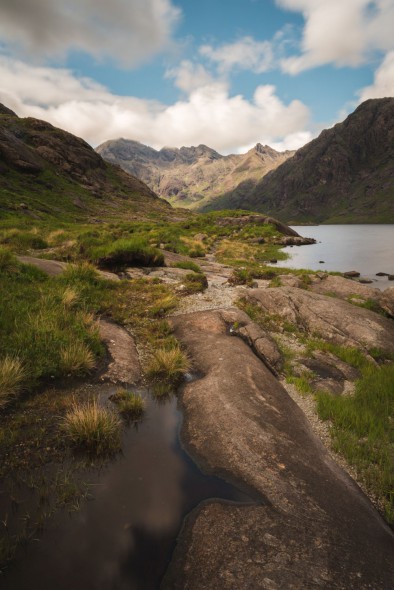
If you do visit Elgol then I would highly recommend taking one of the boat tours to Loch Coruisk, which is located in the heart of the Cuillin Hills. It takes around 45 minutes by boat to reach the loch, but during the journey you will be able to enjoy great views of the mountains and potentially encounter common seals.
Once you get to the loch you will greeted by a stunning view of the Black Cuillins, which surround the area. The area can be quite boggy, so watch your step and bring a good pair of boots with you. There’s plenty of good walking in this area, and if you feel up to it you can also do the seven-mile walk through the Cuillins to Sligachan.
Conclusion
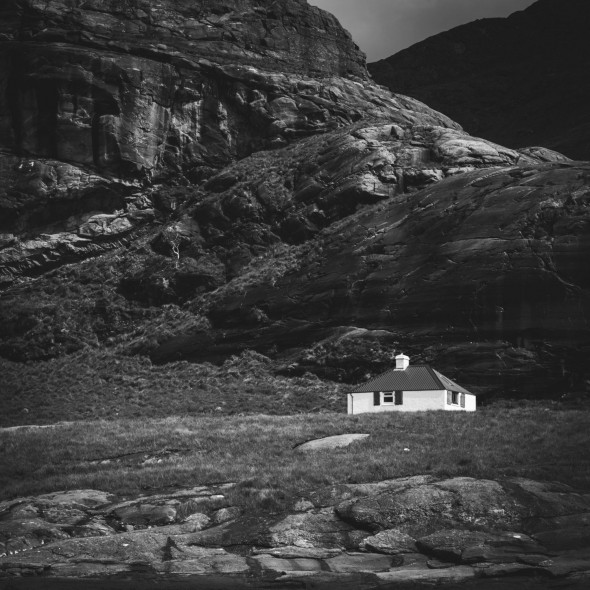
What I’ve covered in this article is just a small sliver of what the Isle of Skye has to offer. There are lots of other places on the Isle that I’d love to photograph – Talisker Bay, The Fairy Pools, Dunvegan Castle, Uig Bay, Portree. So get exploring, and see for yourself why the Isle of Skye is one of best locations in the world for nature photographers.
About the Author
Kirk Norbury is a nature photographer and cinematographer based in Ayr, Scotland. You can find out about the workshops he runs and view more of his work on his website.

